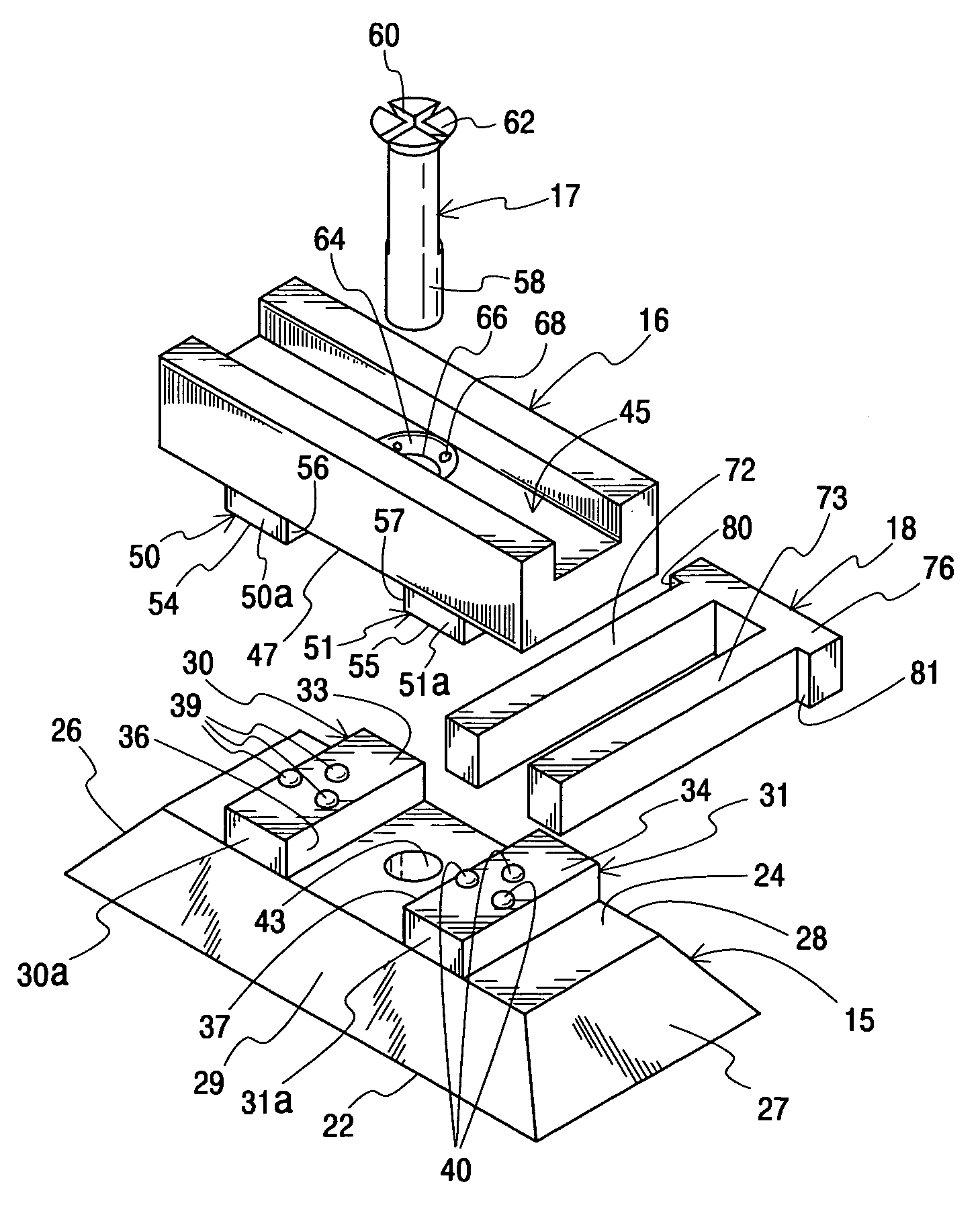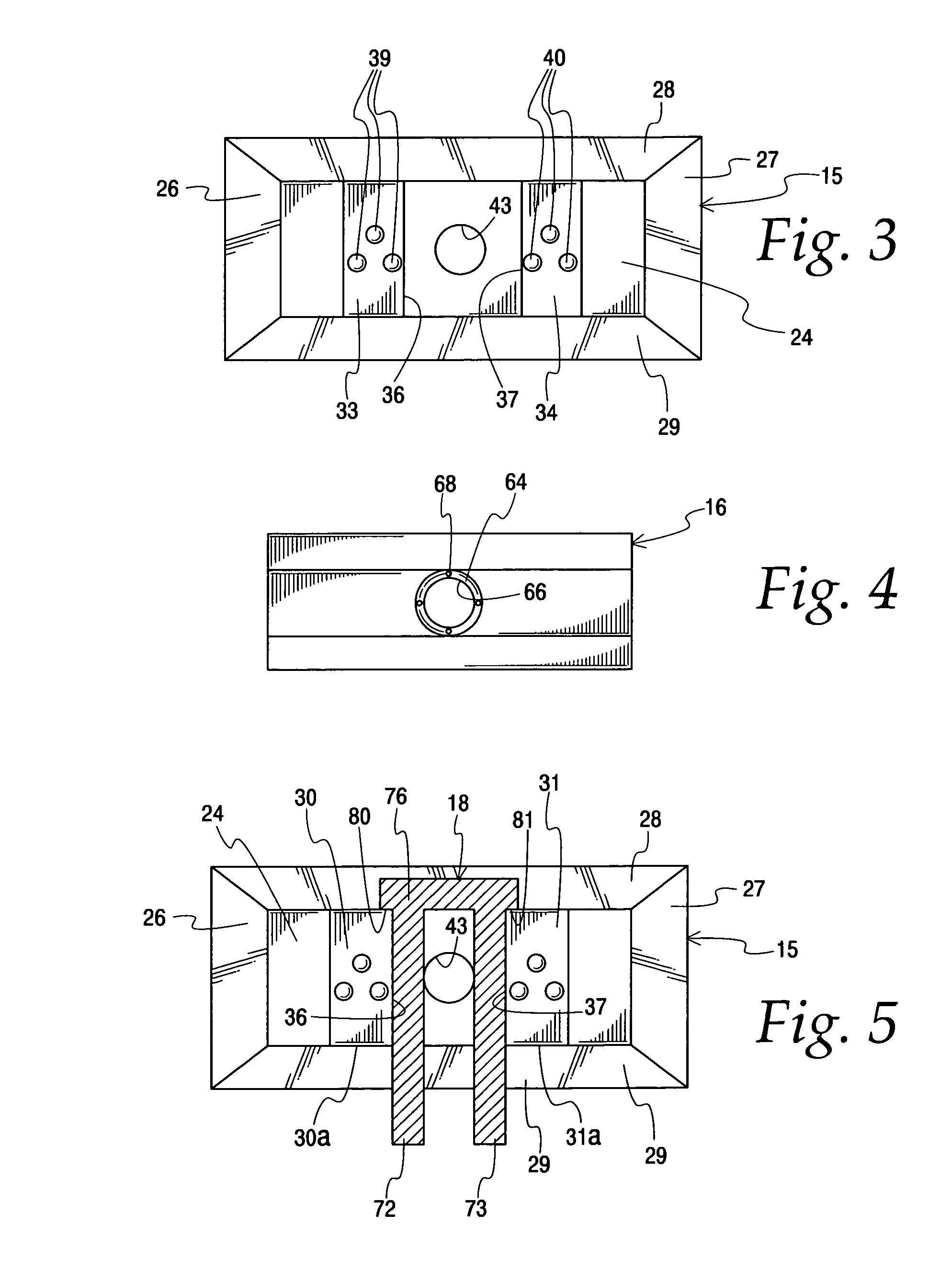Orthodontic bracket
a bracket and orthodontic technology, applied in the field of new and improved orthodontic bracket appliances, can solve the problems of reducing the possibility of root resorption of orthodontically induced tooth movements, affecting the comfort of patients, and reducing the possibility of root resorption, so as to reduce the friction between the archwire and the tooth on which the bracket is mounted to a desired position, the time of retraction movement of the tooth is significantly shortened, and the effect of reducing friction
- Summary
- Abstract
- Description
- Claims
- Application Information
AI Technical Summary
Benefits of technology
Problems solved by technology
Method used
Image
Examples
Embodiment Construction
[0017]Referring now to the drawings, and particularly to the embodiment of FIGS. 1-7, the orthodontic bracket of the invention includes generally a base 15 and an archwire receiving member 16 rotatable on the base. A stud, generally indicated by the numeral 17, coacts with the archwire receiving member 16 and is suitably anchored in the base 15 for rotatably mounting the archwire receiving member 16 on the base. It will be appreciated that the base on the archwire receiving member may be of various shapes and the embodiment of FIGS. 1-7 is primarily illustrative of the invention and the parts of the bracket that produce the rotational mounting of the archwire receiving member on the base and the ability to employ a locking pin, generally indicated by the numeral 18, for locking the archwire receiving member to the base during the final stage of treatment. The coacting bearing or sliding surfaces, resulting from rotation of the archwire receiving member on the base, include means to ...
PUM
 Login to View More
Login to View More Abstract
Description
Claims
Application Information
 Login to View More
Login to View More - R&D
- Intellectual Property
- Life Sciences
- Materials
- Tech Scout
- Unparalleled Data Quality
- Higher Quality Content
- 60% Fewer Hallucinations
Browse by: Latest US Patents, China's latest patents, Technical Efficacy Thesaurus, Application Domain, Technology Topic, Popular Technical Reports.
© 2025 PatSnap. All rights reserved.Legal|Privacy policy|Modern Slavery Act Transparency Statement|Sitemap|About US| Contact US: help@patsnap.com



